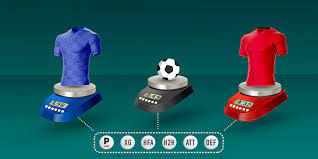How to identify value in your bets? That’s the big question. My friend, Alex Napierone, has asked me to write this article for him, an affiliate with the highly successful soccer betting agent wholesale price comparison site, Sportingbet. Sportingbet are the kings of the soccer punting marketplace, the market that turns thousands of pounds of internet shoppers into betting fortune.
As with a lot of the online trading and gambling markets, the term ‘value’ is relative. But from my experience I can tell you that if you know how to work the ratio between the odds offered by the bookmakers on a particular market, and the actual probability of that event occurring, then you have a huge advantage over everyone else.
So How do you find value?
Well firstly start playing the market and work out what odds your bookmakers have offered, and what you think the probability of an event occurring is. For example, I was told the price of a player to have a particular statistics peak would be 3/1 to 4/1, when in fact it’s more like 12/1 to 1.
Let’s say a friend of mine, Tony, makes a regular bet on a football match, and he’ll wager on a team to score first, or last, or even on both teams to score. He’s got this corner of the bounce, and knows that the market will go the other way, so when he’s had his prediction correct so far, and his cost is low, he will bet again. Tony’s a regular winner too, but he knows that to win big, you have to get it right 2 or 3 times in a row, and when you fail to predict correctly on your 3rd attempt you will lose.
So I said, ‘deposit 20 bonus 30‘. That’s where you get to the heart of value, the fundamental fact you can’t get right without knowing. And here’s the kicker, you get to correct your mistakes after your first win, so they don’t cost you anything!
Value – where’s the risk?
So we know the relationship between the odds offered by the bookmakers on a particular market, and the probability of an event occurring. From that we can list the odds we think the bookies are offering in the marketplace. Off the top of my head you can work out what odds you think the bookies are giving you, and what you think the alternative odds are.
The next thing to do is to compare these odds with the actual prices on markets, especially on the matches you’re interested in. Be careful of price comparison – many sellers use incorrect information, or built stories around the competition to try and induce a sale. Often these stories are just rumours and misconceptions to promote their own product.
I won’t bore you with the details, but in brief its better to range more than one bookmaker offering odds on the same market, because then you are making sure you get the best odds available. This leaves less room for error than if we only used one bookmaker. We will always have finding a price discrepancy even when matching, so don’t be put off as if you find a great price, you could have got a great price.
How do we do this? There are 2 ways we can do this. We can compare the odds from all the bookies, and work out our percentage chance of winning the match in each event, but this sounds quite a lot of work. We could also ask the bookmakers for odds comparison, which is a much simpler approach.
First, you ask the bookmaker for your stake, in the usual fashion. Then, instead of having all the events priced out exactly the same, you ask for a comparison of the odds the bookmakers using the same event. Your aim here is to remove as many of the events as possible.
For example, on a football match, you can narrow the price by say eliminating a match played in a afternoon start time. Reduce the number of returns for the favourite by 25%, because the favourite is more likely to kick out in the first instance, and you’re selling the betting market in one event (the betting for the home win, draws etc doesn’t apply).
On a tennis match, you’d remove a major tennis tournament match, because the court may be slippery. Again, reducing the number of return by 25% reduces the betting market.
It removes the biggest threat to the market as it’s unlikely anyone is going to win on any of the 11 tennis matches, so it’s highly unlikely you’ll beHead to head bettingon any of the matches. By ‘changing the enemy of the underdog’ you remove another of the major threats to the market as well.
By doing all this groundwork you’re less likely to get it wrong and more likely to avoid the major mistakes.
